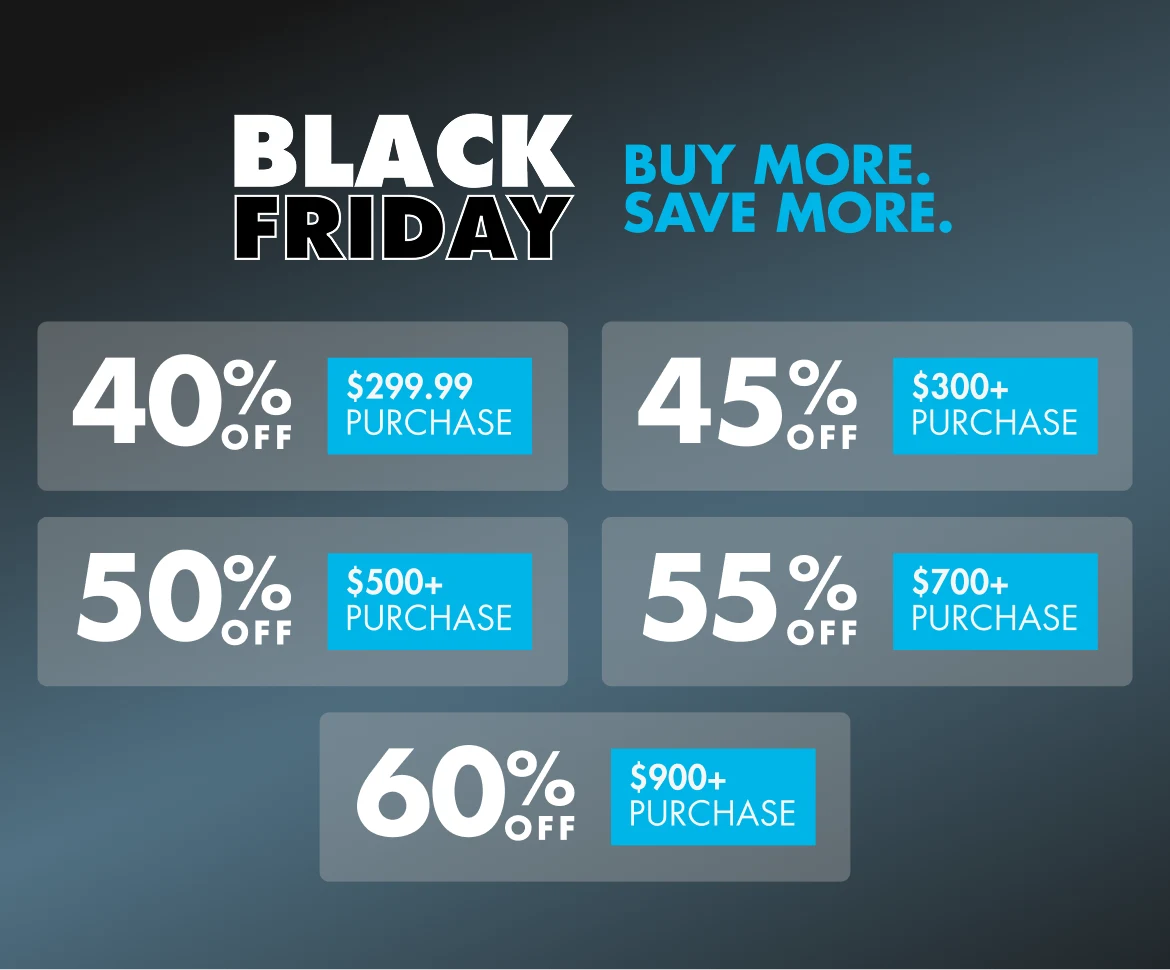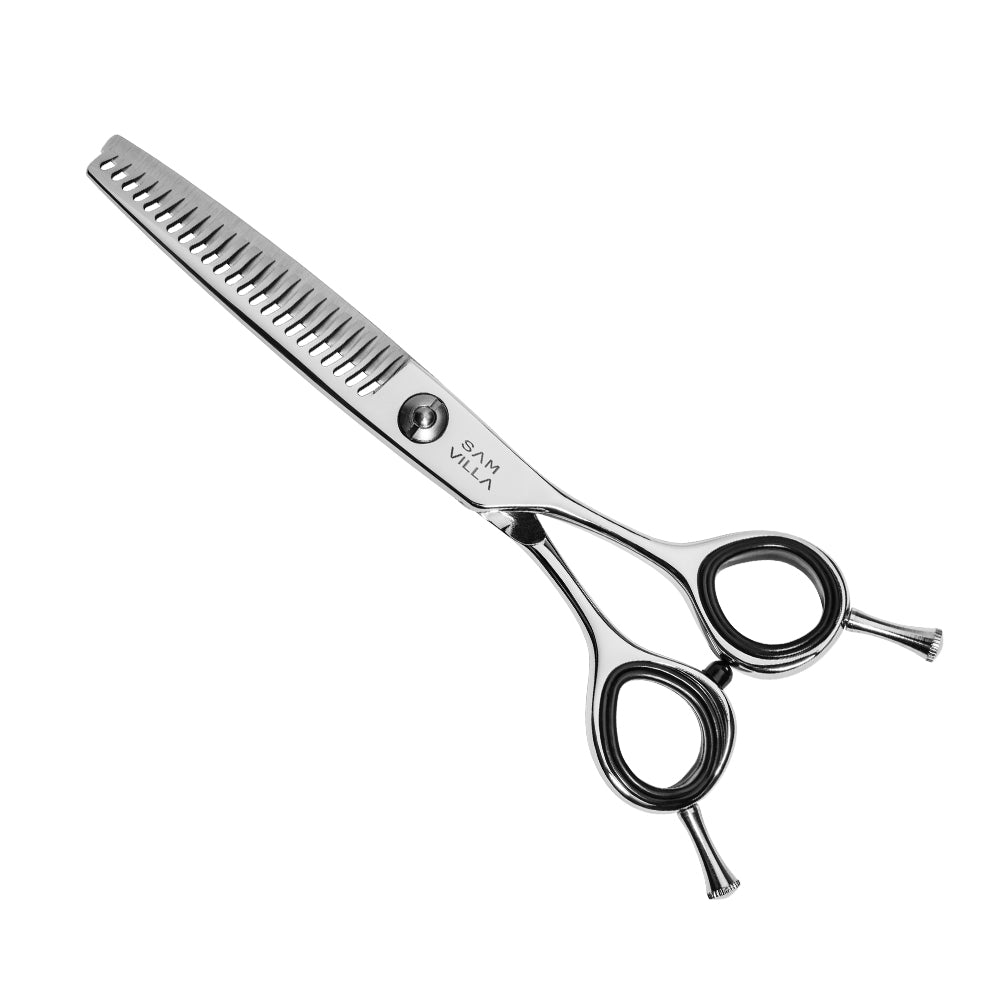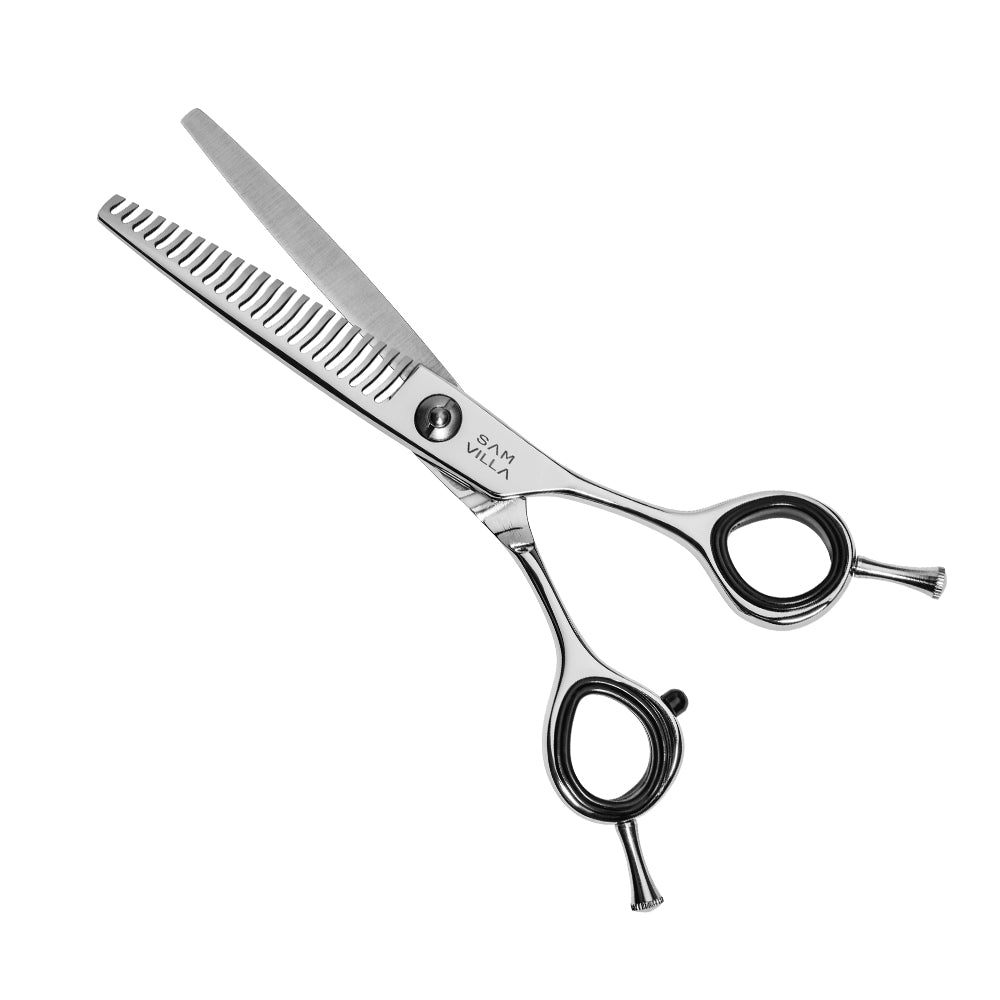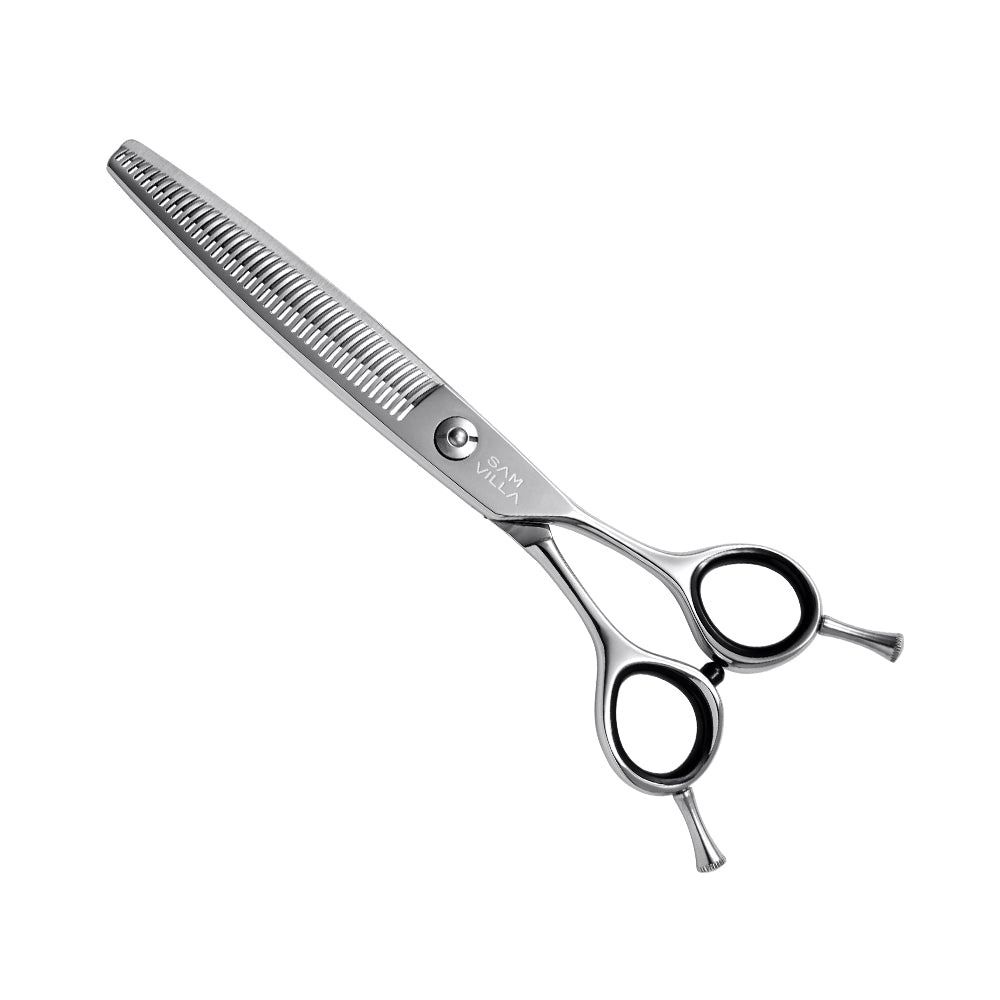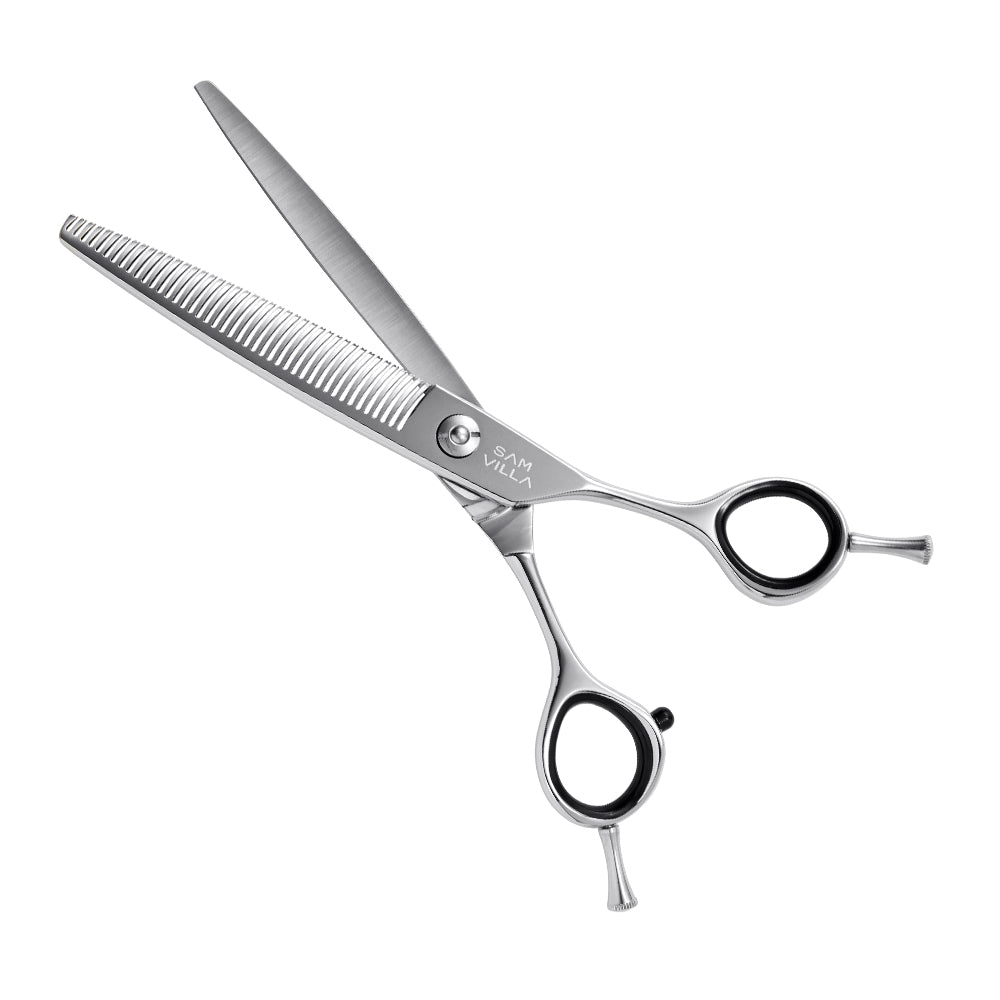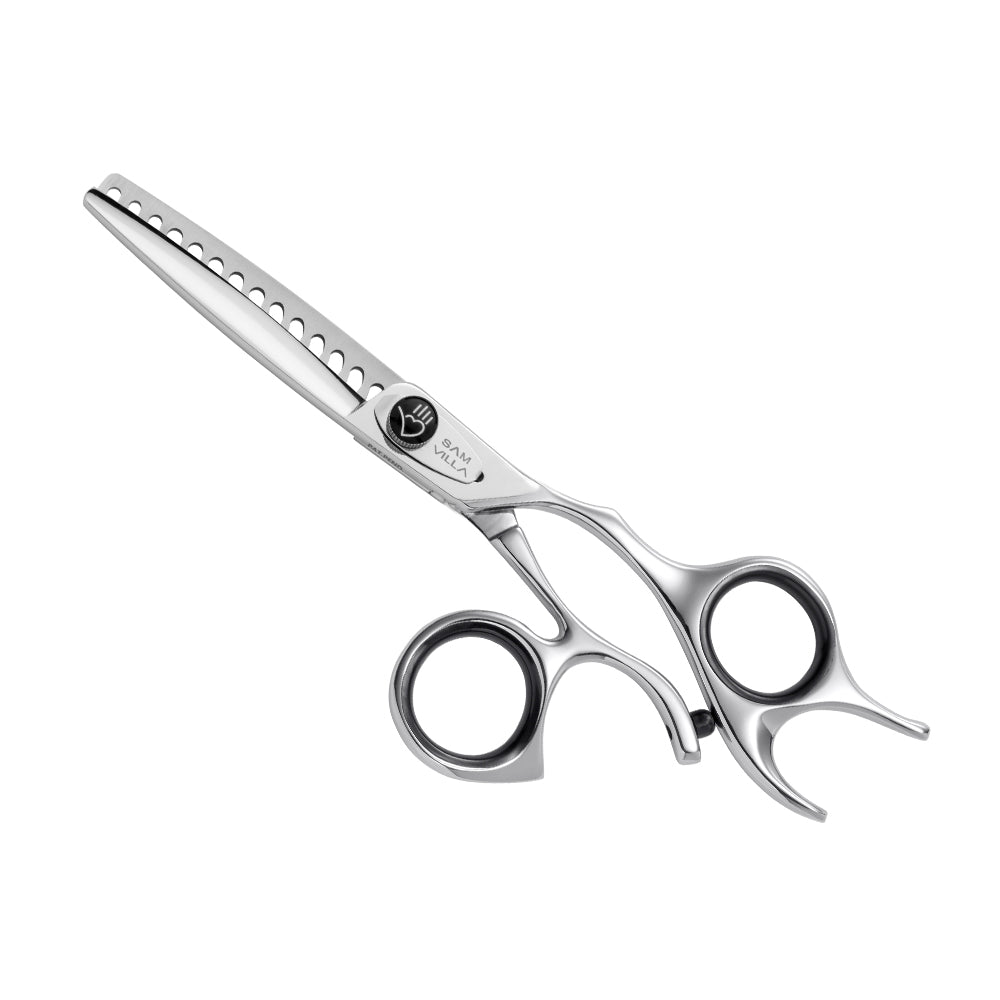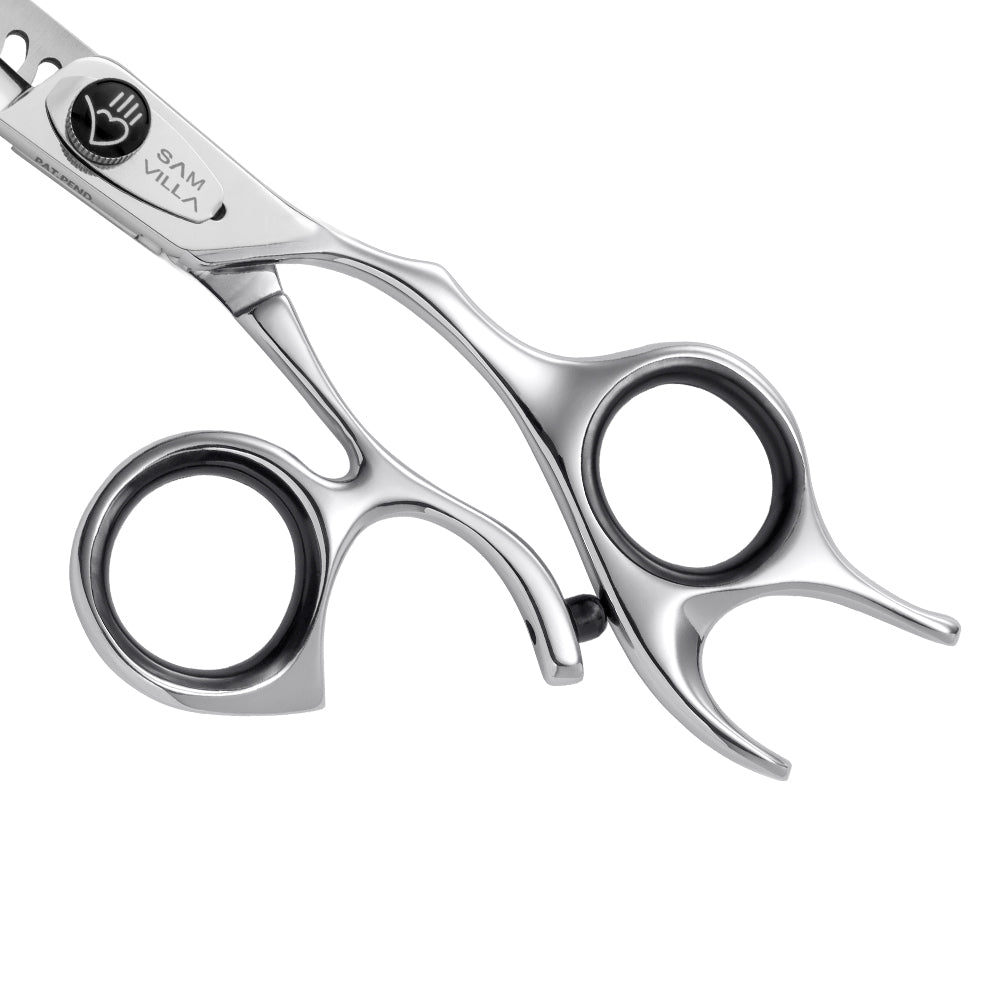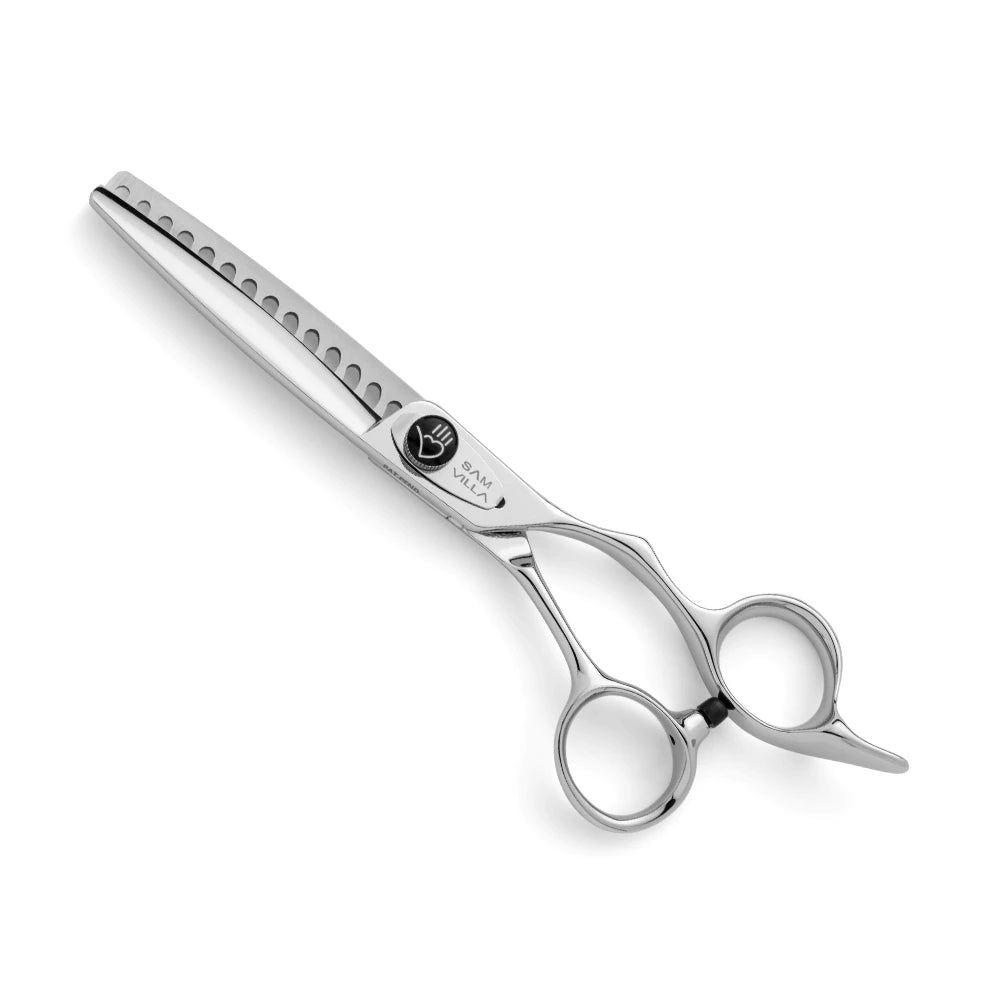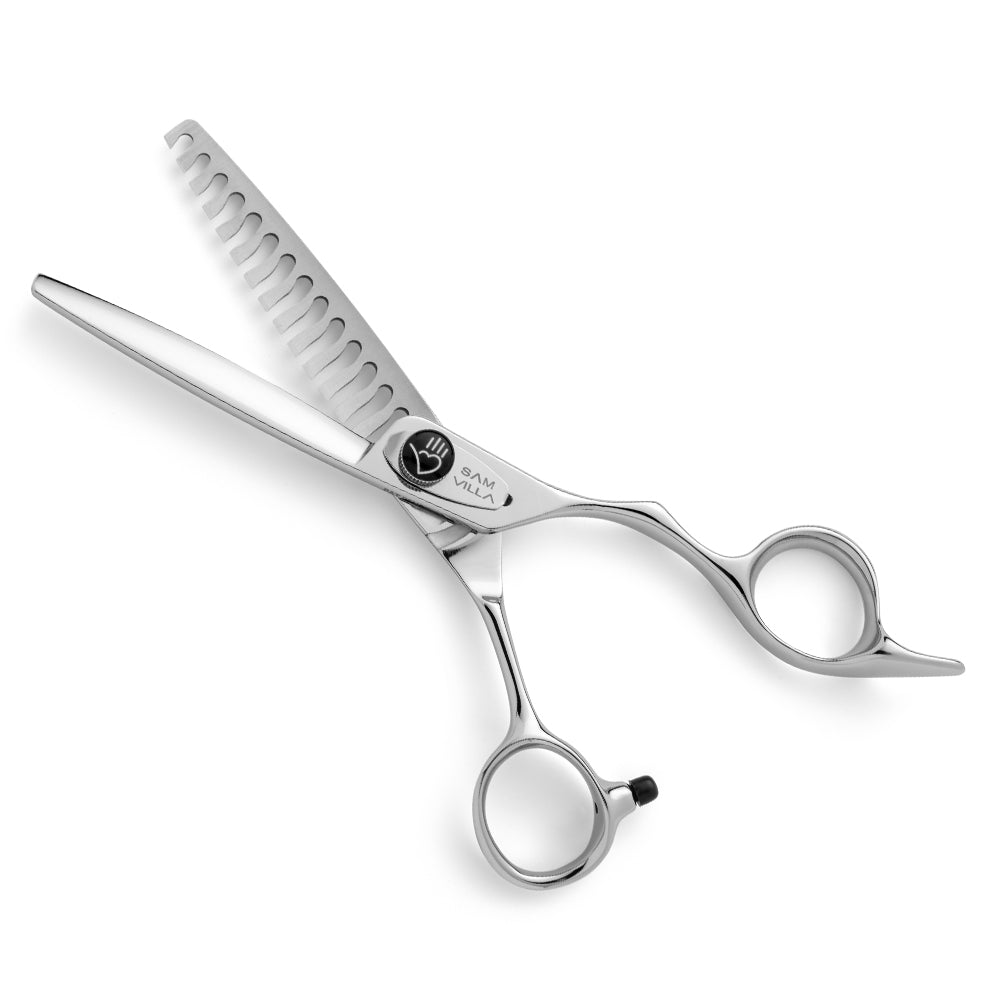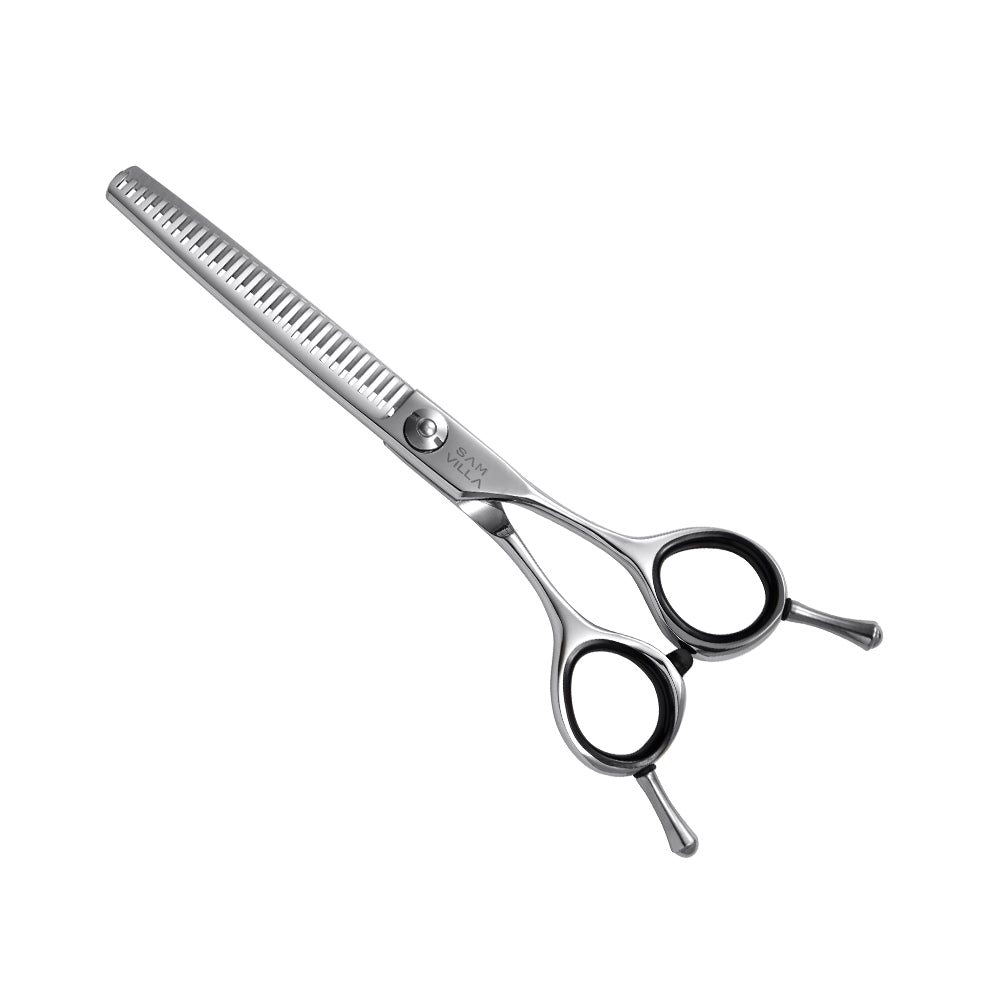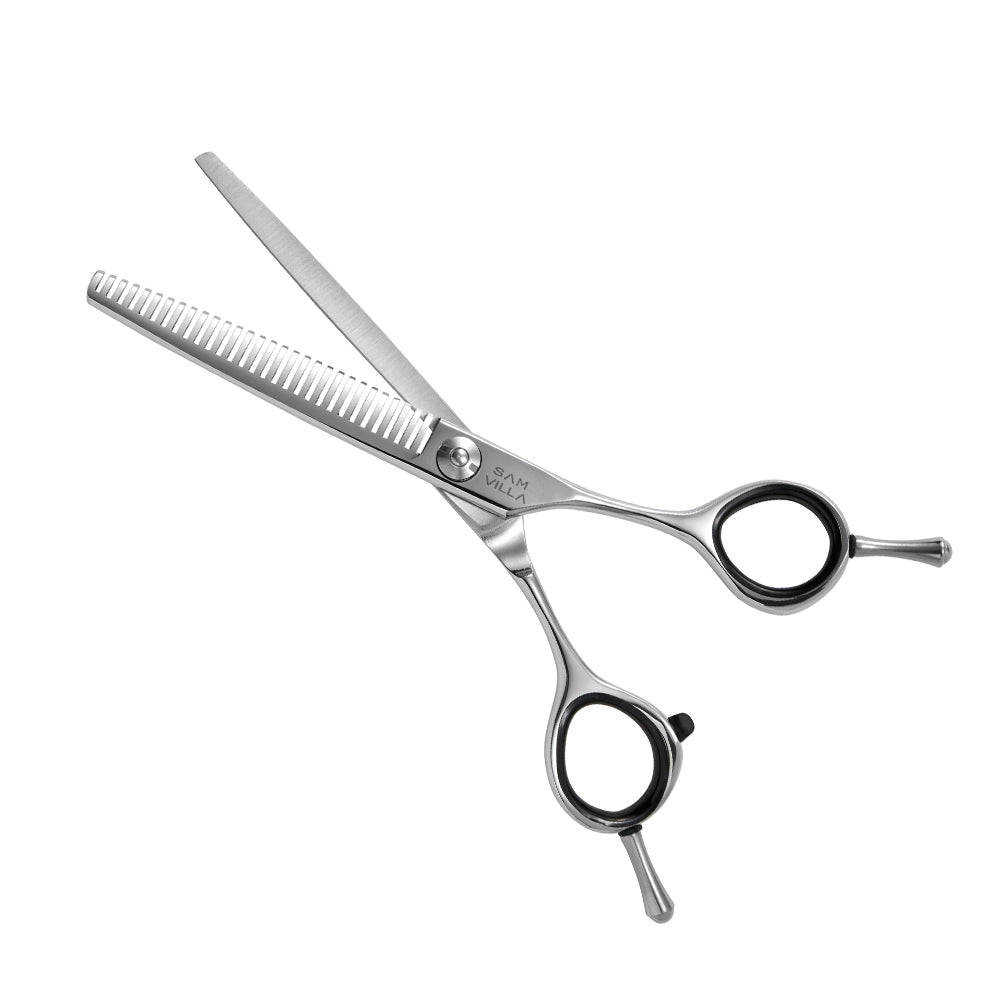*BLACK FRIDAY: Discount automatically applied at checkout. Promotion excludes select products, items already on promotion, gift cards, cutting stools, value sets/client-ready kits, and mannequin heads. Cannot be combined with other codes or offers. Other restrictions may apply. Offers subject to change without notice. While supplies last. Valid 11.20.25 – 11.30.25.
*Giveaway Terms: All orders placed 11.01.25 – 12.04.25 are automatically entered for a chance to win a 1-hour LIVE Zoom Q&A with Sam Villa. No purchase necessary—see official rules for details. Winner selected via ViralSweep on 12.05.25, notified by 12.08.25, and announced on or about 12.09.25. U.S. residents only; 18+. Void where prohibited.
Which Blender Is Right for You?
Feature
Series
InvisiBlend
Teeth
23
Handle Design
Reversible
Available In
Right & Left Handed
Designed For
Seamless blending and texturizing
without leaving visible lines.
Perfect For
Point cutting, slide cutting,
and weight removal.
*Dual finger tangs allow for changing cutting position by flipping the shear
Reversible
Blender
Teeth
42
Handle Design
Reversible
Available In
Right & Left Handed
Designed For
Extracting weight and controlling
texture, eliminating bluntness.
Perfect For
Maximum hair removal. Ideal
for scissor over comb work.
*Dual finger tangs allow for changing cutting position by flipping the shear
14 Tooth Point
Cutting Shear
Teeth
14
Handle Design
Classic
Available In
Right & Left Handed
Designed For
Creating quick, consistent texture and
separation—not traditional blending.
Perfect For
Point cutting, removing weight and
creating separation and negative space.
14 Tooth Point
Cutting Shear
Teeth
14
Handle Design
Signature
Available In
Right & Left Handed
Designed For
Creating quick, consistent texture and
separation—not traditional blending.
Perfect For
Point cutting, removing weight and
creating separation and negative space.
-
Motor Type
-
Heat & Speed Settings
-
Ionic Technology
-
Cord Length
-
Best For
Teeth
23
Handle Design
Reversible
Available In
Right & Left Handed
Designed For
Seamless blending and texturizing
without leaving visible lines.
Perfect For
Point cutting, slide cutting,
and weight removal.
*Dual finger tangs allow for changing cutting position by flipping the shear
-
Motor Type
-
Heat & Speed Settings
-
Ionic Technology
-
Cord Length
-
Best For
Teeth
42
Handle Design
Reversible
Available In
Right & Left Handed
Designed For
Extracting weight and controlling
texture, eliminating bluntness.
Perfect For
Maximum hair removal. Ideal
for scissor over comb work.
*Dual finger tangs allow for changing cutting position by flipping the shear
-
Motor Type
-
Heat & Speed Settings
-
Ionic Technology
-
Cord Length
-
Best For
Teeth
14
Handle Design
Classic
Available In
Right & Left Handed
Designed For
Creating quick, consistent texture and
separation—not traditional blending.
Perfect For
Point cutting, removing weight and
creating separation and negative space.
-
Motor Type
-
Heat & Speed Settings
-
Ionic Technology
-
Cord Length
-
Best For
Teeth
14
Handle Design
Signature
Available In
Right & Left Handed
Designed For
Creating quick, consistent texture and
separation—not traditional blending.
Perfect For
Point cutting, removing weight and
creating separation and negative space.
-
Motor Type
-
Heat & Speed Settings
-
Ionic Technology
-
Cord Length
-
Best For
Teeth
30
Handle Design
Reversible
Available In
Right & Left Handed
Designed For
Adding natural, soft texture
without blunt lines.
Perfect For
Blending fine hair and the fringe.
*Dual finger tangs allow for changing cutting position by flipping the shear


